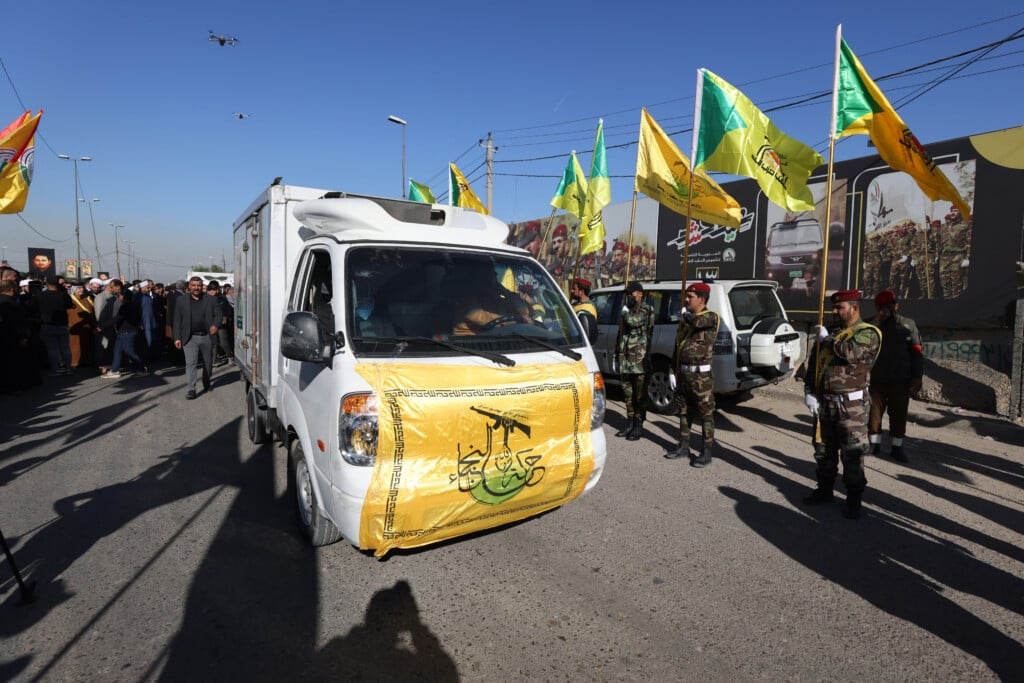
Latest Developments
U.S. forces carried out airstrikes on Kataib Hezbollah on January 24 in response to the Iranian-backed group’s targeting of American troops in Iraq. Kataib Hezbollah conducted rocket and ballistic missile attacks on Al-Asad base in western Iraq on January 20, injuring four U.S. service members. U.S. Central Command said that the strikes on January 24 targeted “three facilities used by Iranian-backed Kataib Hezbollah militia group and other Iran-affiliated groups in Iraq.” The facilities included a headquarters for Kataib Hezbollah, a storage location, as well as an area used by the group to train with missiles and drones.
Expert Analysis
“Iranian-backed terrorist groups in Iraq have increased their threats against the United States, Israel, and allies in the region in the wake of the Hamas attack on Israel on October 7. Kataib Hezbollah is a central part of the Iranian proxy network of well-armed groups that threaten Iraq and the region. It is essential that these groups be deterred from further attacks. Airstrikes on their facilities are a key method of responding to attacks by Iran’s proxies.” — Seth J. Frantzman, FDD Adjunct Fellow
“In a bid to consolidate its dominance in the Middle East, Iran aims to expel U.S. forces from both Iraq and Syria. With the eruption of the Gaza war on October 7, Iran seized upon the opportunity to advance this objective by leveraging its extensive network of clients and proxy groups to launch attacks against American troops in the region.” — Joe Truzman, Senior Research Analyst at FDD’s Long War Journal
U.S. Forces Were Attacked 151 Times in Iraq and Syria
Iranian-backed terrorist groups have targeted U.S. forces in Iraq and Syria at least 151 times since mid-October, according to the Pentagon. The groups used rockets, missiles, and drones and have now escalated to using ballistic missiles. White House Deputy National Security Advisor Jon Finer said that the United States is taking the January 20 attack “extremely seriously,” and he characterized it as a “very serious attack, using a capability of ballistic missiles that posed a genuine threat.” The United States is seeking to “establish deterrence,” he added.
Iran has targeted al-Asad base with ballistic missiles in the past. After the United States killed Qassem Soleimani, the commander of Iran’s Islamic Revolutionary Guard Corps (IRGC) Quds Force, and Kataib Hezbollah leader Abu Mahdi al-Muhandis in January 2020, Iran fired numerous ballistic missiles at al-Asad base. Iran also moved ballistic missiles to Iraq in the fall of 2018.
Increased Threats to Israel and the Kurdistan Region of Iraq
The Iranian-backed Islamic Resistance in Iraq claimed on January 23 that it had targeted Israel with a drone. This is one of several recent statements by groups in Iraq claiming responsibility for attacks against the Jewish state. In two incidents in late December, Israel downed several drones launched from Iranian-backed groups in Iraq that were targeting Israel. Iran also targeted the civilian home of a Kurdish businessman on January 15 in Erbil in northern Iraq, killing him and members of his family. Iran falsely claimed the businessman had links to Israel.
